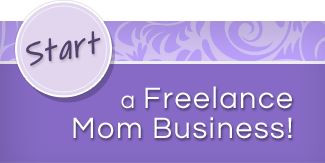Crowds get a bad rap, especially among entrepreneurs. We know that a third person can spoil an otherwise harmonious duo – after all, three’s a crowd! We always want to stand out above the crowd. No one wants to just be part of the crowd. In fact, a crowd can lead to mob mentality – and what good can a mob do?
Yes, entrepreneurs are prone to these kinds of opinions. After all, an entrepreneur (or freelancer) is one who chooses to take an independent route, is happiest when in charge and in control of their own destiny, and is most fulfilled feeling like they are working toward their own goals, and not those of someone else.
But the crowd doesn’t have to be something we work to escape.
The Rise of Crowdfunding
Thanks to recent crowdfunding legislation, the crowd just may be the key to getting your business off the ground. Crowdfunding is a collective network of people who pool their money and/or other resources together to support efforts initiated by other people or organizations (efforts like…your business idea!). The legislation, which started out as the Entrepreneur Access to Capital Act, was signed into law April 5, 2012. For those interested in the legislation’s legal background, Crowdfunder.com provides a short but thorough timeline. Otherwise, just know that the legislation buoyed the several web-based platforms already coordinating crowdfunding efforts.
In his blog entry Crowdfunding and Social Entrepreneurs, Tom Szaky states that “crowd-funding holds real promise for early-stage social entrepreneurs” because it allows start-ups to “raise seed capital from any number of investors in small amounts through emerging equity crowd-funding platforms.” Crowdfunding websites benefit the entrepreneur who needs assistance preparing their ideas for an investment pitch and giving them an audience of interested investors eager to support new ventures. They also help investors who don’t have a lot of money to spend but still want to contribute to something they consider worthwhile.
Who Should Use It?
Szaky feels that crowdfunding is especially important for social entrepreneurs, or those whose product or service promotes a socially-responsible, long-term goal that will engage would-be benefactors. Sustainable companies will prove attractive to a multitude of investors who are able to invest the smaller amounts that crowdfunding allows and visibly see the results of their investment online.
Crowdfunding may be more successful for businesses with an established consumer base, a strong existing brand presence, or a story that will resonate with investors. A respected local business may also be able to generate investors from those in their community through crowdfunding.
How It Works
Let’s look at the example of the Glif, a product developed by Tom Gerhardt and Dan Provos, designers who work under the moniker Studio Neat. The Glif is a simple iPhone 4 accessory that mounts the iPhone to a standard tripod and acts as a kickstand to prop the iPhone up at an angle. The Glif allows for hands-free FaceTiming, watching videos, making movies, using the iPhone as an alarm clock, and many other functions that appeal to iPhone users – of which there are, well, just a few.
Tom and Dan used a crowdfunding platform, Kickstarter.com, to find investors for the Glif. Sites like Kickstarter provide an opportunity for entrepreneurs to share their progress and successes with their backers, which the Glif makers did well. Their campaign raised over $137,000 to create, market, and sell the Glif, and the majority of their backers (over 4,665 of the total 5,273) pledged just between $20 and $50. In return, they received their own Glif after manufacturing was complete. In crowdfunding, investors are often given something for their money, which makes the transaction more instantly satisfactory. Many platforms, including ArtistShare, Kickstarter, Pledgemusic, PleaseFund.Us and Funding4Learning, also create some security for the investor by holding funds in an escrow account until the funding target is reached (and returning the money to investors if it’s not).
To compare the features of some prominent crowdfunding platforms, check out Inc.com’s crowdfunding comparison. Read 10 Tips for crowdfunding your business from the California SBDC for assistance getting started.
A Word to the Wise
Ryan Caldbeck, who helped found crowdfunding site CircleUp, suggests that entrepreneurs carefully consider the prospect of taking on investors through crowdfunding in The New York Times’ small business blogs. “Taking on outside investors is an important decision in the life of your company. It is important to know you are working with experienced professionals in this process.” He advises that you research the different platforms, paying special attention to the site’s management team and the investors already using the site. Do a thorough review of the safeguards offered to you and the investors (such as escrow). Consider the future of your company or product and how many people you want involved in the course of your work. As Caldbeck stated: “the process of getting stockholder approval for subsequent rounds is more complicated — and unpredictable — if you have to involve several hundred people.”
And if you do decide to move ahead with crowdfunding, strongly consider using an accredited platform.
Do you have experience using crowdfunding for your small business? Please share. Your insights and our insights create knowledge for others.






